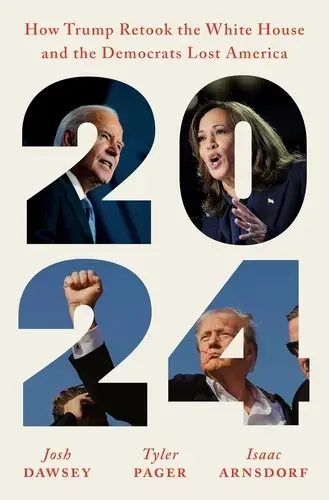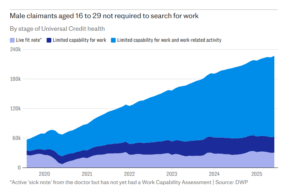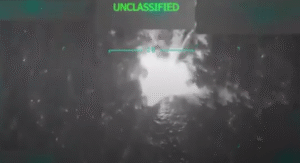Do we really need another autopsy of 2024? Another hour-by-hour insider account of how the Democrats collapsed into confusion, and how Donald Trump (a man indicted, reviled, and already defeated once) managed to retake the White House That’s the question 2024, by Josh Dawsey, Tyler Pager, and Isaac Arnsdorf, quietly asks, even as it sets about answering it. What sets it apart from other state-of-the-nation texts (Chris Whipple’s Uncharted, Jake Tapper & Alex Thompson’s Original Sin, or even Alexander Dugin’s grotesque Trump Revolution) is not what it says, but how it says it. The book reads less like political history and more like a series of staff notes. Flat, methodical, and all the more damning for it.

Where Uncharted tries to dramatise the election as chaos (the “wildest campaign in history”) 2024 demystifies it. There is no myth here. Just the long, dry hum of institutional decay. No revelations. No secret plan. Just a system grinding to failure in real time.
It begins not with the declaration, but a raid. The FBI’s 2022 search of Mar-a-Lago. We have agents in polos, Trump at Trump Tower. The event is treated not as rupture, but as routine. This is the book’s tone throughout: bureaucratic, unflinching, eerily calm. Trump hears the news on a phone call and moves, within hours, to monetise it. “I want everybody that has a voice out there… I don’t care if they’re good at this or not,” he orders. No strategy. No narrative arc. Just noise. The comeback begins not with ideology, but self-preservation. He isn’t running to save America. He’s running to stay out of jail.
The Republican Party’s surrender is documented in clinical detail. DeSantis delays and dithers. Other challengers are neutralised through gossip, ridicule, and the deadening gravity of inevitability. Lara Trump is appointed to the RNC. Debates are cancelled. The rules are rewritten. There is no hostile takeover. Just drift. Trump doesn’t have to destroy the party. He only has to become it.
If the GOP chapters are a study in capitulation, the Democratic ones are a slow-motion car crash. Where Original Sin at least attempted to reckon with Biden’s cognitive decline, 2024 frames it as a kind of collective delusion. The president’s inner circle believes, or pretends to believe, that 2022’s better-than-expected midterms were a sign of vitality. The classified document scandal is quietly buried. The Hunter Biden saga is waved away. Staff shield Biden from scrutiny while simultaneously insisting that he’s the only viable candidate. Obama urges caution. Donors panic. Jill Biden remains resolute. It is less a campaign than a coronation of inertia.
When Biden eventually withdraws (too late, of course) the party turns to Kamala Harris. 2024 does not indulge the symbolism. “Unburdened,” her campaign slogan, reads like a punchline here. The transition is clumsy. Her team is underpowered and factionalised. Her message (some mix of generational renewal and Bidenite continuity) pleases no one. One chapter, “Cruel Summer,” reads like a eulogy: swing voters drift away, young voters stay home, and Trump tightens his grip.
By the time the debates arrive, Harris is competent but irrelevant. The book does not need to editorialise. Trump dominates because the structures are built for him. She cannot escape the frame: Biden’s shadow, gendered expectations, a hostile press, a soft party machine. “Kick his ass,” a staffer tells her before the debate. But the real battle has already been lost. Not in the polls, but in the architecture of the campaign itself.
What makes 2024 unique among the post-election texts is precisely this refusal to reach for grand theory. Where Uncharted insists that 2024 was a singularly wild, unpredictable election, 2024 calmly insists the opposite: it was depressingly predictable. Trump did not win because he offered hope. He won because he understood the terrain: legal impunity, media fatigue, party control, and an electorate exhausted into compliance. It is a story less about charisma or disruption than logistics.
No bombshell revelations. The much-gossiped rumour that Trump and Obama played a secret round of golf (floated by insiders as a symbolic thaw or covert détente) is raised and quietly dismissed. There was no back-channel, no handshake deal. Just a system grinding to failure in real time.
This is where the contrast with Dugin is most stark. The Trump Revolution imagines Trump as a civilisational messiah, betrayed by liberals and globalists, sent to redeem the West. 2024 makes no such claim. Trump isn’t delivering prophecy. He’s yelling at Jared over dinner, scoffing shrimp at Mar-a-Lago, storming in and out of courtrooms. He didn’t win because he stood for something. Furthermore, he won because he knew which levers still worked, and no one else was pulling them.
However, what the book leaves out is just as revealing as what it includes. Palestine barely features. Despite the centrality of the Gaza genocide to campus protests, Arab-American mobilisation, and the political rupture it caused, the book largely looks away. There is no reckoning with how Biden’s unconditional support for Israel hollowed out what remained of the Democratic coalition. No mention of Rafah. No accounting for the disillusionment among young voters, organisers, and communities who watched a genocide unfold with full US backing. The silence isn’t accidental. It reflects the book’s limits. This is power chronicled from the inside. Rage from below (over Gaza, police violence, reproductive rights) barely registers. The only voters who matter are the ones in the focus groups.
2024 never names fascism. But it sketches its architecture. Not through declarations, but through documentation: cancelled debates, a party machine hollowed out, legal institutions bent toward one man’s will. The book ends before the ICE raids begin, before troops are deployed to enforce mass deportations. But in its silence, it forecasts them. The terrain is already visible. It has normalised impunity, politicised law, a media climate too fatigued and compliant to resist. Trump doesn’t need a theory. He needs control. If fascism arrives dressed in suits, backed by court rulings and flanked by family loyalists on the RNC, 2024 shows how much had already been conceded. It doesn’t name what’s coming. But it shows how it became possible.
The final chapters (Garbage In, Garbage Out and The Ballroom and the Boiler Room) are among the most quietly terrifying. Harris’s campaign staff throw money at ads and consultants. The base fractures. Voters don’t turn out. Trump hosts tech billionaires and corporate heads in Palm Beach. “We’ve had Google, Facebook, Bill Gates, Tim Cook…” he boasts. No longer the outsider. No longer the insurgent. Just the man everyone comes to see.
If Uncharted ends with crisis, 2024 ends with normalisation. Trump’s return isn’t treated as a break from American democracy. It’s what happens when nothing interrupts the pattern. The FBI, the courts, the press, the parties. All played their part. None could stop him.
Does the book tell us what comes next? Not directly. But the implications are brutal. The Trump future is not looming. It’s banal, institutionalised, and already here. There is no coup. No purge. No grand ideological reset. Just the slow fusion of state, spectacle, and executive impunity. The pageantry remains. The checks no longer do.
So, do we need another autopsy of 2024? Perhaps not. But if we are to have one, better it is like this: methodical, unromantic, and cold enough to recognise what most liberal analysis still avoids. That Trumpism does not need a second act. It is the present tense. Clean suits, Supreme Court rulings, billionaires at the gates. The counter-revolution already happened. Fascism has arrived. All that remains is to manage the after-party.




